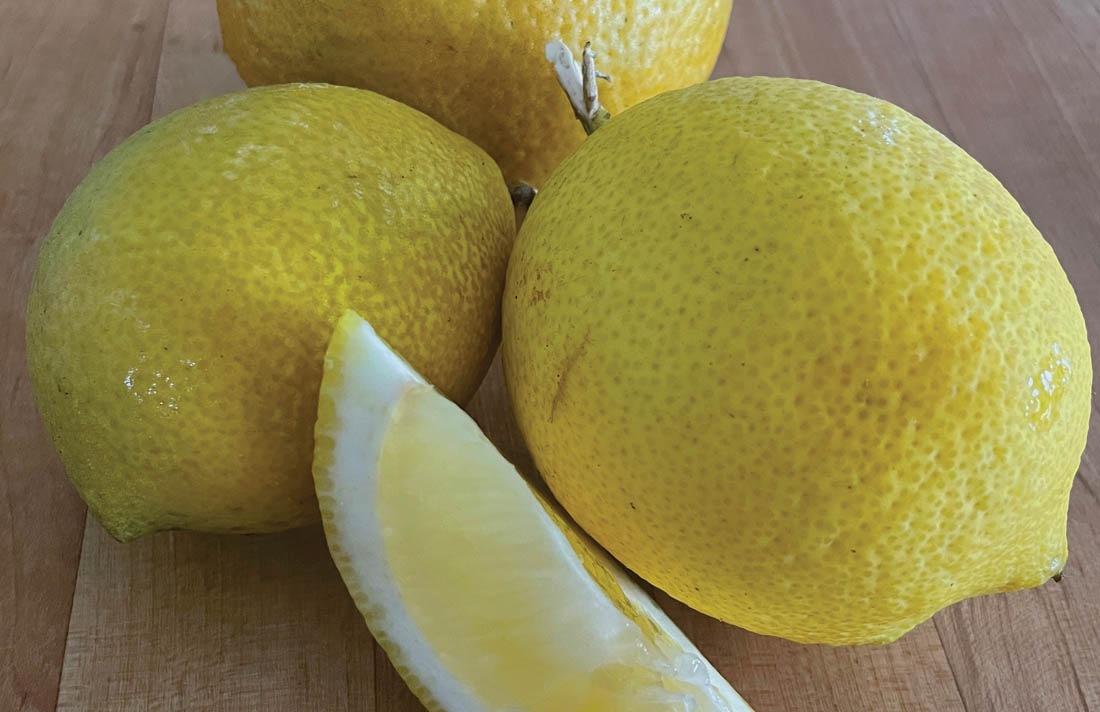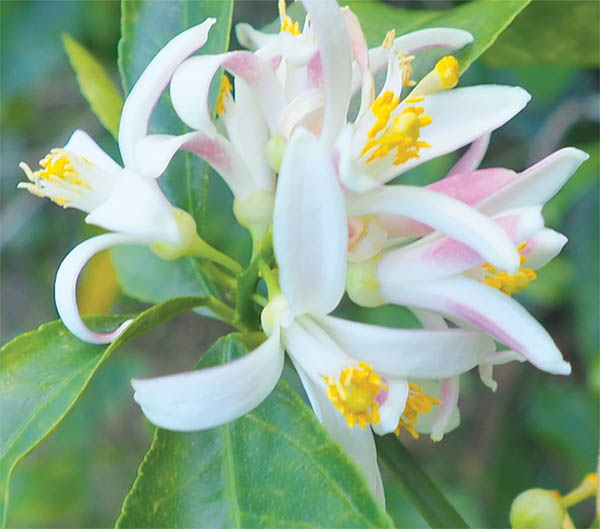
Medicinal Plants from the Garden: Unlock the Healing and Cleansing Power of Lemon

By Brittany P. Anderson
A young boy reaches his hand into a branch of shiny green foliage, palming a bright yellow, slightly oblong fruit. The tree sways as he tugs to release the object of his desire. Bringing his hand from the evergreen leaves, the child holds his prized lemon above his head and runs to deposit it in his mother’s lap. He is beyond thrilled to repeat these steps until the tree is stripped of its low-hanging fruit.
Lemon trees are a staple for many Hawai‘i Island residents. They provide shade in the home garden, and even just one tree can supply an abundance of fruit. The uses for lemons in the home are astounding—from supporting health to cleaning furniture, it’s no wonder lemon trees are a popular addition to the island yard.
Horticulturalists generally believe that the lemon developed from a natural cross between the citron and sour orange. The citron is described in fourth-century texts as a medicinal fruit, with the pith (white layer under the yellow skin) being the portion utilized for its healing properties.
Lemons were first grown in the Mediterranean, and spread throughout the Middle East by the 12th century. They landed in California with the Spanish in the mid-1700s. Don Francisco de Paula Marin, a man of many talents, is credited with bringing the lemon to Hawai‘i in the early 1800s.
A surplus of lemons dropped in one’s lap by an eager child is quite the blessing as the uses for the sour citrus abound. For starters, there are a considerable amount of health benefits contained within just one lemon. The peel, also known as the rind, contains naringenin, which has been shown to possess antibacterial, antifungal, and antiviral properties. Naringenin is also being studied as a treatment for Alzheimer’s disease.
The compound that gives lemon its citrusy smell is owed to d-limonene, which is recognized as aiding in digestion and ulcer prevention. Limoncello, an Italian lemon liqueur, is made from lemon peels soaked in clear distilled alcohol with sugar. The drink is usually served chilled as an after-dinner digestivo (digestive) to aid in the digestion of a large meal. Think of it as an after-dinner version of water with lemon.

Perhaps lemons are most known for containing vitamin C. Adding a wedge of lemon to a cup of hot tea gives your body an extra boost to help fight off seasonal colds. Most plants and animals make their own vitamin C, but humans and a handful of others don’t. Scurvy, a once-common disease caused by lack of vitamin C, afflicted long voyage sailors exploring the world. The prescribed cure for the sailors? A daily dose of lemon juice.
Adding a slice of lemon peel with the pith in bone broths and soups is a great way to get lemon’s health benefits without the sour aftertaste. Lemon’s usefulness doesn’t end there—it’s a powerful cleaner that can take the place of harsh synthetic chemicals, making for a healthy home and body.
Lemon juice contains citric, ascorbic, and malic acid and has a pH of 2–3. Because of these acids, lemon juice can be used as a powerful cleaner in the kitchen. Add a tablespoon of lemon juice to your dishwasher before running it to help get rid of stinky buildup along the bottom. You can also pour 1/4 to 1/2 cup of lemon juice into your washing machine (directly or in the bleach dispenser if you have one) to freshen whites instead of using bleach.
Who doesn’t love the fresh lemony smell of a clean house? You don’t need a synthetic lemon scent if you use fresh lemon juice to clean your home. Rather than using chemicals, mix one part lemon juice, one part vinegar, and two parts water for tile floors. The disinfectant properties of lemon juice and vinegar make for a universal and safe household cleaner.
Hawai‘i Island is home to several varieties of lemon, including Meyer, Eureka, Jambiri (locally called “rough-skin lemon”), and Ponderosa. But for many island residents, they simply call their tree a “backyard lemon.” There is a myriad of ways to use lemons to support whole-body health, whichever variety you stumble upon or have dropped off at your home by the bagful from a friendly neighbor. ❖



